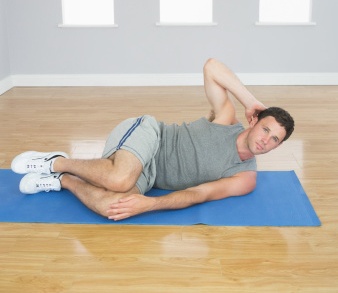From the beginning, fitness and working out (generally speaking) has been a constant struggle of good versus evil. Of course, good refers to the ideal body type that we strive for and what makes us feel good about ourselves, and bad refers to the undesired body types and feelings that come from being a less-conditioned individual.
Focusing on a Specific Body Part
 We use fitness for many reasons, sometimes for stress, weight loss, or performance. Relatively speaking, the role of the Fitness Specialist has not been around as long as most professions, but it has had some very drastic and conflicting concepts and theory clashes, contradictions and discrepancies. These concepts and theories are ever changing and evolving to meet the criteria and need of scientific research, human nature and what actually works. Of note, one such theory that needs to be put to bed is the idea that we can “spot reduce” by simply focusing on a specific body part.
We use fitness for many reasons, sometimes for stress, weight loss, or performance. Relatively speaking, the role of the Fitness Specialist has not been around as long as most professions, but it has had some very drastic and conflicting concepts and theory clashes, contradictions and discrepancies. These concepts and theories are ever changing and evolving to meet the criteria and need of scientific research, human nature and what actually works. Of note, one such theory that needs to be put to bed is the idea that we can “spot reduce” by simply focusing on a specific body part.
Examples of spot reduction can be seen in many workout programs that we see today, even if we do not realize that’s the case. Doing 300 sit ups to make your stomach go away, doing triceps extensions until your arms fall off to get rid of the behind-the-arm jiggles and doing seated adduction/abduction leg exercises to get track star thighs are all examples of spot-reduction techniques that seem to be good in intention, but miss the mark.
Busting the Myths
In a previous NIFS blog, Health Fitness Specialist Mistie Hayhow reminded us that there are many fitness myths that get the better of us. Hayhow goes on to state that while exercise builds our muscle, it’s burning the layer of fat off the outside that makes our muscles appear more defined. If we think about how weight loss works, we know that nutrition plays a huge role in what actually works and what does not.
Also, we must factor in that when we work out, muscles develop. If we have muscle developing under a layer of fat, we are presuming to be reducing size, but the effect is that we will appear to be bigger because we did not address the fat loss first.
For some athletes, it would make sense that a specific arm/leg dominant event would create enough physical imbalance to amount to visible difference, but a study at the University of California Irvine, in which tennis players were subjected to several years of subcutaneous fat measurements, yielded inconclusive data and put yet another blemish on the concept (Perry, 2011).
The fact is this: Spot reduction is a myth.
Fitness Keeps Evolving
We have plenty of information and examples to back up the claim that spot reduction is a myth, so why are we still doing it? As I mentioned before, fitness is ever changing and evolving, and it’s only getting better. Trust that your Fitness Specialist has your best intentions in mind (as they did 20 years ago when the ideas and concepts were quite diverse), but theories change. To keep up to date, I suggest meeting with an HFS at NIFS to ensure your needs are being met and that your questions are being answered.
Rejoice and Evolve,
This blog was written by Thomas Livengood, Health Fitness Instructor at NIFS. To find out more about the NIFS bloggers click here.

